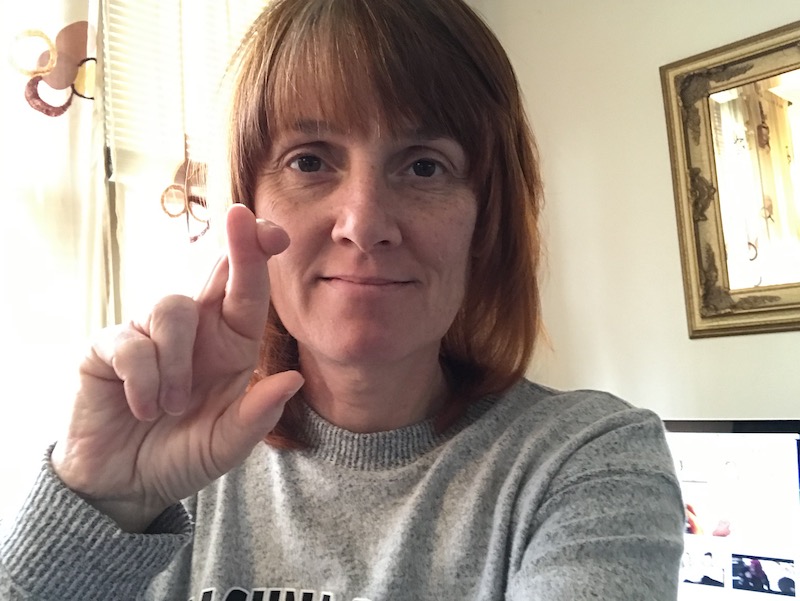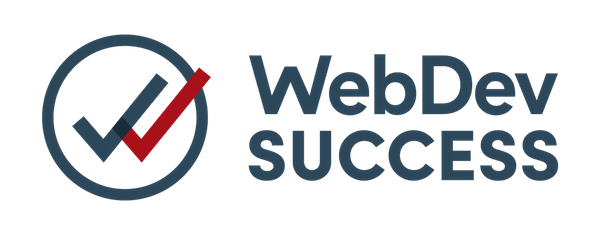
I used to measure my business success and financial health by looking at my checking account balance. If it was above a certain amount, then I was OK. Otherwise, I felt nervous.
That meant I felt nervous a lot. But this approach to measurement worked for me for a couple of years.
I didn’t even know what a bookkeeper did. Then, I met with a member of my networking group who offered bookkeeping services. She explained to me that an organized monthly record of my sales and expenses would be important if I were ever audited by the IRS.
All she had to say was, “IRS Audit” and I was in. Sign me up!
Once I had a bookkeeper, she emailed me monthly reports of my earnings and expenses. I would file them away, often without bothering to look at them.
When I did look, I went straight to the last number on the last page: the profit/loss for the month. This number told me if I made money or lost money that month.
It never matched my checking account balance.
Sometimes, I thought I had a great month and my checking account agreed. But the profit/loss number said otherwise. A month with a record breaking sales number was offset by record-breaking expenses!
My business was still young at that point. I didn’t rely on the reports to make decisions. I just believed the money would come. And, thankfully, it did.
More money meant more clients. More clients meant I was really busy—too busy, I told myself, to review my American Express business charges each month.
The last thing I wanted to look at were the numbers.
Then, I got divorced.
My expenses went up because I had to start paying for things that I hadn’t needed to pay for on my own in quite a while—like rent.
Once I was completely on my own, I felt like more was at stake. Without a partner to pick up any slack, I needed my business to support me consistently. I had success, but I needed to know I had built a business I could rely on.
I started to ask myself:
- Can my company afford to give me a raise?
- Can my company afford an upgrade to the deluxe coworking membership that comes with a private office and a 12 month lease?
- Can my company afford to hire a W2 employee?
- If so, how much can I pay them?
- What kind of cushion do I need in the event of a slowdown in business?
The only way I could answer those questions was to look at the numbers. .
Where could I cut back? What was my profit or loss each month?
But, I needed to know more than my monthly profit and loss to be able to grow my business. The bookkeeper’s reports alone would not help me predict or forecast my future revenue and expenses.
I also needed to track a few other indicators.
The important numbers I track and measure besides revenue and expenses
Leads
This is the number of people filling out my online form or calling to inquire about my services. March has seen a dramatic dip in form inquiries through my website. Should I panic? Is the coronavirus to blame?
My numbers tell me there has been a dip in inquiries every March over the past few years. The temporary slowdown doesn’t come as a surprise. I also know my busiest months are in December and January. Not a great time for me to take a vacation.
Close Rate
This is the number of leads that turn into paying customers. If 4 out of 10 leads becomes a customer, then my close rate is 40 percent. I need to know when this number goes up or down when I
- raise my prices
- start emailing leads
- change anything about messaging
A change in close rate became especially important to measure when I hired a salesperson. Is the close rate better than when I was the one following up on all of the inquiries? (Yes! By far!)
Customer Lifetime Value
This is the average value of all of the purchases a customer will make over the lifetime of their relationship with me. I encourage my customers to be serial buyers through subscription plans and/or multiple service packages.
Knowing average CLV helps me decide how much to spend on customer acquisition activities like marketing and advertising. As in, I don’t want to spend more per customer than I’m likely to make from working with that customer.
The “nut”
Did you know the phrase, “Covering your nut” historically refers to the wheels of a wagon or carriage? When a carnival set up in a town, officials would take a nut from the largest carriage wheel to prevent the performers from leaving without settling outstanding bills.
Today, it means the minimum amount of revenue I need to generate each month to pay my bills.
My bills are expenses like payroll, internet, cell phone, digital subscriptions required to do our work, payment processing fees, and office rent.
It’s a fairly solid number. Each month, I keep an eye on incoming payments to be sure I am covering my nut. As soon as the nut is covered, I can take a deep breath and quit asking myself, “Am I making enough money this month?” The sooner we cover the nut, the better.
Start caring about the numbers now.
I just hired a new member of my team.
Before I started the process, I looked at the numbers. Those numbers don’t lie.
I asked myself: Does my company show a pattern of growth that would justify another hire?
If I just looked at the checking account balance, then I could easily get the wrong impression and make the wrong decision.
A guy once told me the reason I was successful. He told me it was my charisma.
Really?
I mean, it’s true. I have a winning personality. It’s a powerful asset.
But I could not build the business that I have today upon my personality and nothing else.
No. Effing. Way.
I’ve built a multi-six figure business because I measure the right numbers and make smart growth decisions based upon those numbers.
In the early stages of my business, I didn’t think I had enough money or customers to make the tedious work of measuring Profit and loss, Leads, Close Rate, Customer Lifetime Value, and the nut worthwhile.
If I had allowed myself to stay in that mindset, then I would not have been able to grow my business.
Knowing these numbers allows you to grow your business. So if you hope one day to hire a team, or even your first employee, don’t wait until you feel important enough to care about these numbers. Start tracking them now.









Good stuff! Sounds obvious when you spell it out but putting it into practice and making it part of the process isn’t.
That’s right, Sam. It’s hard to make it a priority—especially when things are going along great.